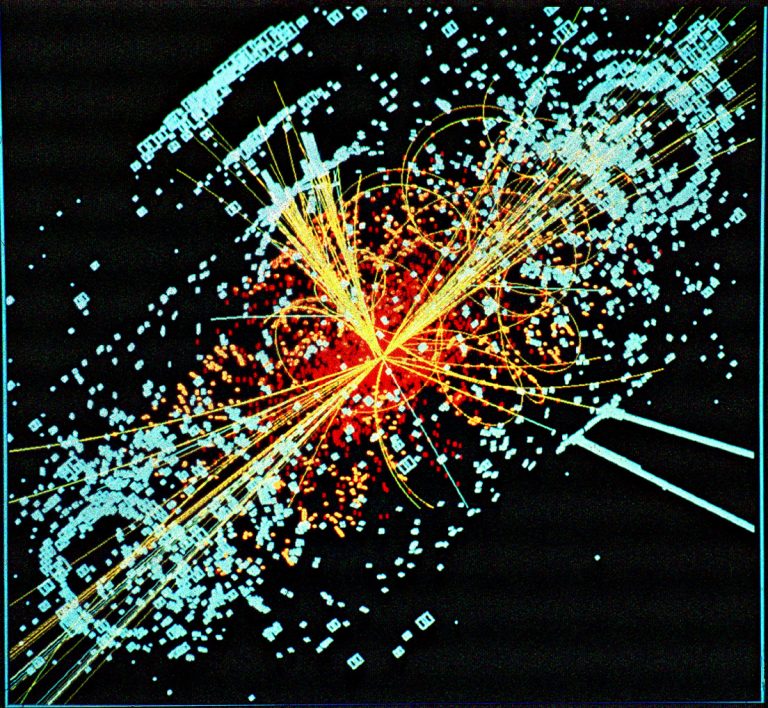
Simulation image of Higgs boson generation
Image creator : Lucas Taylor (License: CC-BY-SA-4.0)
Source: the CERN (click here)
One of the most fascinating features of generative art is the tension between order and disorder, between precision and randomness. Such interplay can determine the coexistence of patterns, unpredictability, repetitions, variation, noise. Something unexpected can often occur, more comes out than it was put in, that is a way to describe emergent behaviour. This is much more than a mere technical aspect. Using Tyler Hobbs’ wording:
“Generative artwork also tends to explain things about the world to us, given that the universe itself is generative, it’s based on laws, and probabilities. These result in certain patterns, emergent patterns, and generative artwork deals heavily in patterns. And so, either intentionally or not, generative artwork is often times stumbling across some of these same patterns that we discover in the world.”
Indeed, for those who knows something about quantum theory, it comes not as a surprise that “the universe itself is generative”. Not only randomness is a key feature of quantum theory, but this disruptive theory changed definitively our understanding of randomness. Prior to quantum physics, it was thought that indeterminacy was the direct consequence of some lack of information on a physical system. According to quantum theory, however, indeterminacy is of a much more fundamental nature, having nothing to do with errors or disturbance. However, quantum physics is not just randomness. Recent studies suggest that quantum effects, randomness included, results from the coexistence of the fundamental symmetries of nature with the finiteness of the informational content of a physical system.
As Seth Lloyd, a scientist who performed seminal work in the fields of quantum computation, wrote:
“The strange and weird aspects of quantum mechanics infect the universe at its very beginning, and – as will be seen – provide the mechanism by which the universe generates its peculiar mix of randomness, order, and complexity.”
According to him, the universe can be regarded as a giant quantum computer. He argues that the quantum computational model of the universe automatically gives rise to the mix of randomness and order, and to both the simple and complex systems that we experience.
In line with this view, we can see quantum theory as the code for generative art, and things around us as the outputs.



